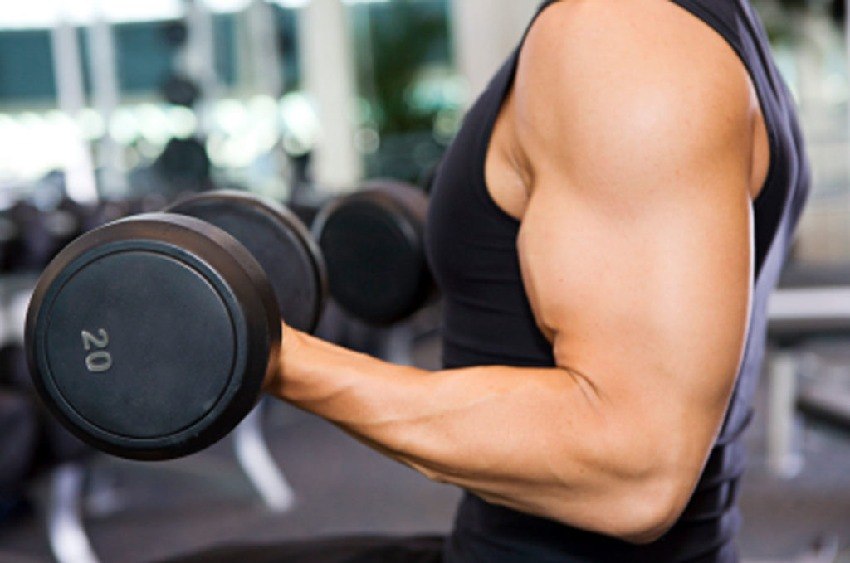8 Post-Workout Tips For Quick Recovery
 Health & Fitness
Health & Fitness
Sure, what you do during your workout is important, but have you given thought to your post-workout plan of action? Muscles need some TLC after they’ve been put through the ringer and there are some specific ways you can aid in their recovery. Here are some tips to ease you out of Delayed Onset Muscle Soreness (DOMS) – that wonderful post-workout feeling of full-body rigor mortis – and the general post-workout malaise.
Get Some Shut-Eye
Quality sleep has been proven to be a critical aspect of health over and over again. Sleep is especially important after you exercise because it “resets” your body. Part of this resetting process involves the body’s release of a growth hormone (GH) that rebuilds cells and tissues. Sleep is the prime time for protein synthesis – a crucial step in repairing muscle fibers after they’ve been broken down during exercise.
Daytime naps also have a measurable positive effect on muscle recovery that won’t interfere with your circadian rhythms as long as you take them earlier in the day and keep them under 90 minutes.
protein Intake (3 Different Times)
Pre-Workout: It has been shown in a study that adding a dose of protein before your workout can preemptively begin the muscle-building process before you even hit the gym.
Post-Workout: A protein boost after exercising helps to repair muscle damage and also ensures that your body is getting the fuel it requires to repair all day.
Pre-Bedtime: A midnight snack is not so bad after all. It turns out that before you go to bed is another good time to introduce protein into your system because protein synthesis occurs during this period and aids in overnight recovery according to research.
Hot & Cold
Alternating between hot and cold water when you’re in the shower – while hard to stand – can help sore muscles both feel and rebuild better. LifeHacker explains the benefits of this rather unpleasant but beneficial post-workout technique: “[t]he contrast bath is […] a somewhat miserable undertaking that involves submerging yourself in hot water for one minute then ice cold water for a minute and repeat[ing this] for up to ten minutes in the shower.” The cold is a natural analgesic which numbs muscle pain and the heat promotes muscle relaxation. Or, you can use ice and heat packs to get the same effect.
It’s also been shown that icing muscles acts as an anti-inflammatory that speed the improvement of muscle strength and lowers the number of muscle damage indicators (like creatine kinase – an enzyme released into the blood stream after muscle cell death).
Don’t Overtrain
Setting a smart fitness schedule that won’t overtax your muscles in the first place is also a good starting point when considering the steps of your post-workout recovery. Overtraining can affect your health negatively and contribute to overuse injuries such as stress fractures, sprains, and strains among others which is why it’s important to set reasonable goals within your grasp.
Foam-Rolling and Stretching
Gentle massage can help stretch out aching muscles and improve their ability to recover after a workout. When muscles are injured or tired from exercise, muscle fibers tend to bunch up and stick together, an effect called adhesion. By using a foam roller, the muscles’ connective tissue can be gently massaged out and “unglued” as detailed by TheGreatist: “Much of the soreness that goes along with exercise occurs when our muscles and fascia — connective tissue running throughout the body — become knotted. Rolling out muscles with foam or semi-rigid rollers — two forms of self-myofascial release (SMR) — can help remove these knots and prevent muscle imbalances from forming [9]. But be warned: While effective, SMR isn’t exactly pain free (we’re untying muscle knots, after all!).”
Go Easy on the Alcohol
Be careful when you imbibe after exercise. A single beer won’t undo your fitness gains but a study by The National Center for Biotechnology Information notes that “consumption of moderate amounts of alcohol after damaging exercise magnifies the loss of force associated with strenuous eccentric exercise […] due to an interaction between muscle damage and alcohol […]” It’s probably best to fill up your pint glass with water than Guinness.
Recovery Activity
Active recovery immediately after exercise can encourage recovery and reduces muscle lactate levels faster than complete rest as this study points out. It may be tempting to stop moving after exercise but it’s a better idea to take a jog or do other cooldowns to help your muscles mend and to get your body back into a resting state.
Eat (The Right Foods)
Protein is a given, of course. But there are other foods that can increase your body’s ability to recover. Omega-3s have been shown in studies by both the Journal of Sports Science and Medicine and the Clinical Journal of Sports Medicine to reduce the inflammatory response post-exercise – meaning less muscles soreness. Water, of course, is also important to replace fluid loss during activity.
Take these steps to decrease muscle soreness, decrease recovery time, and take your fitness game to the next level.
Source: fitstylelife.com




